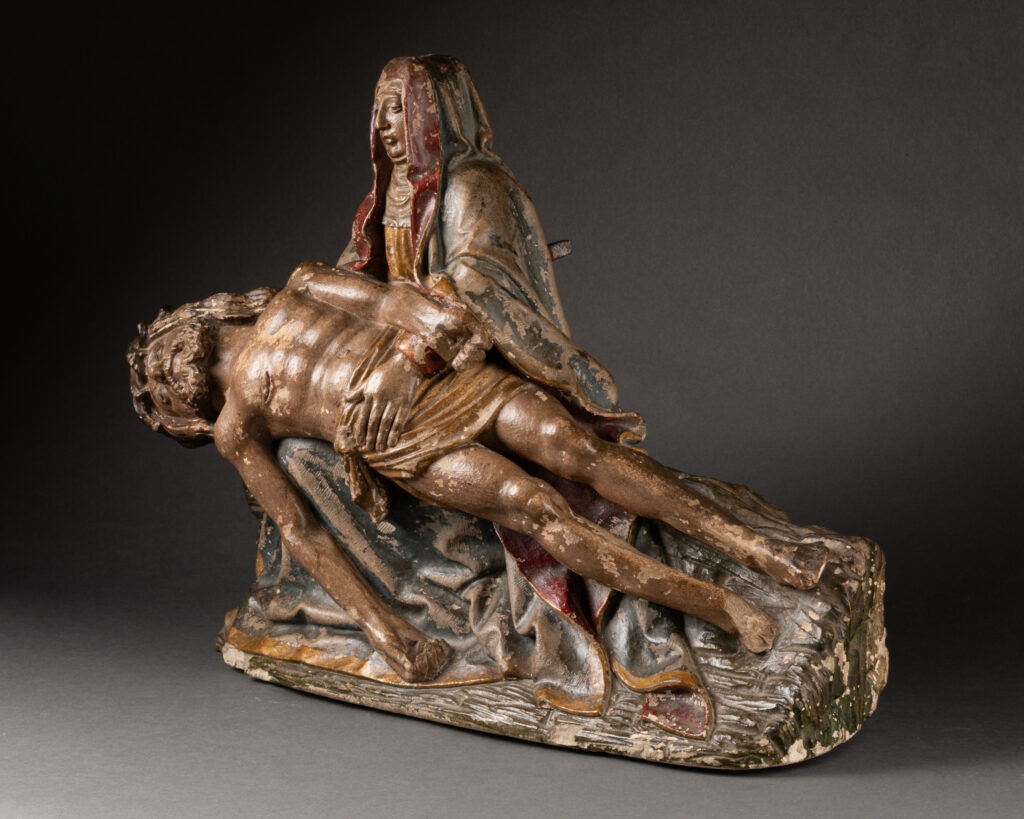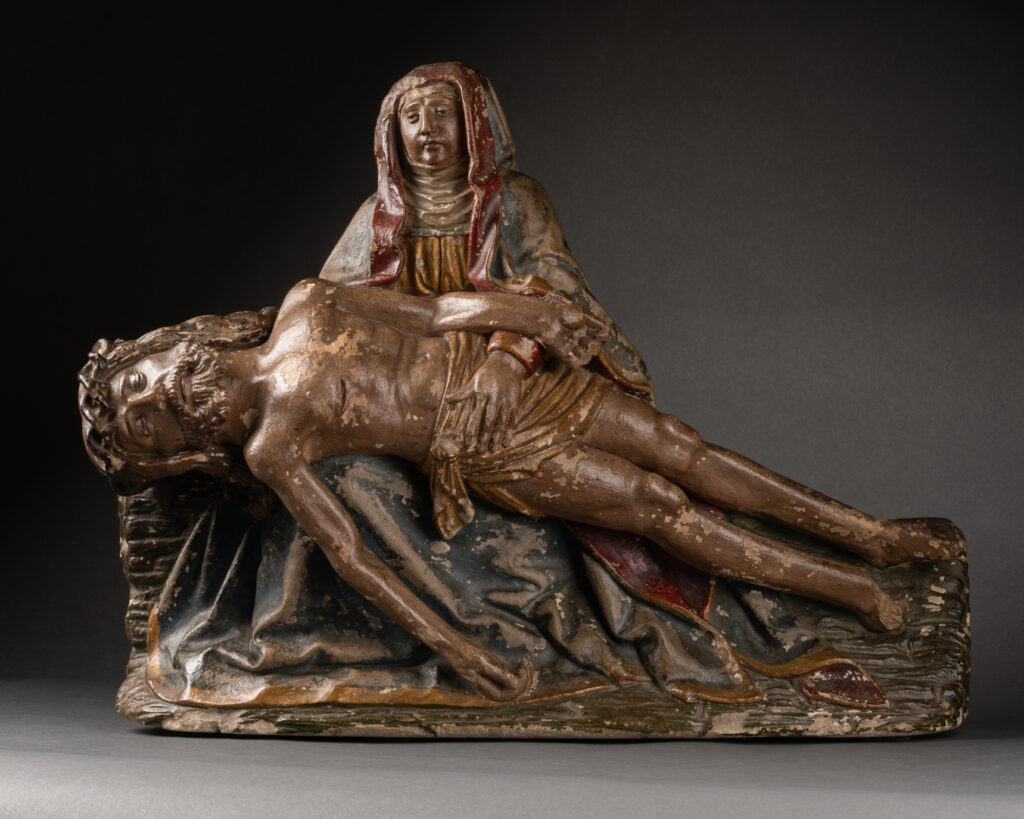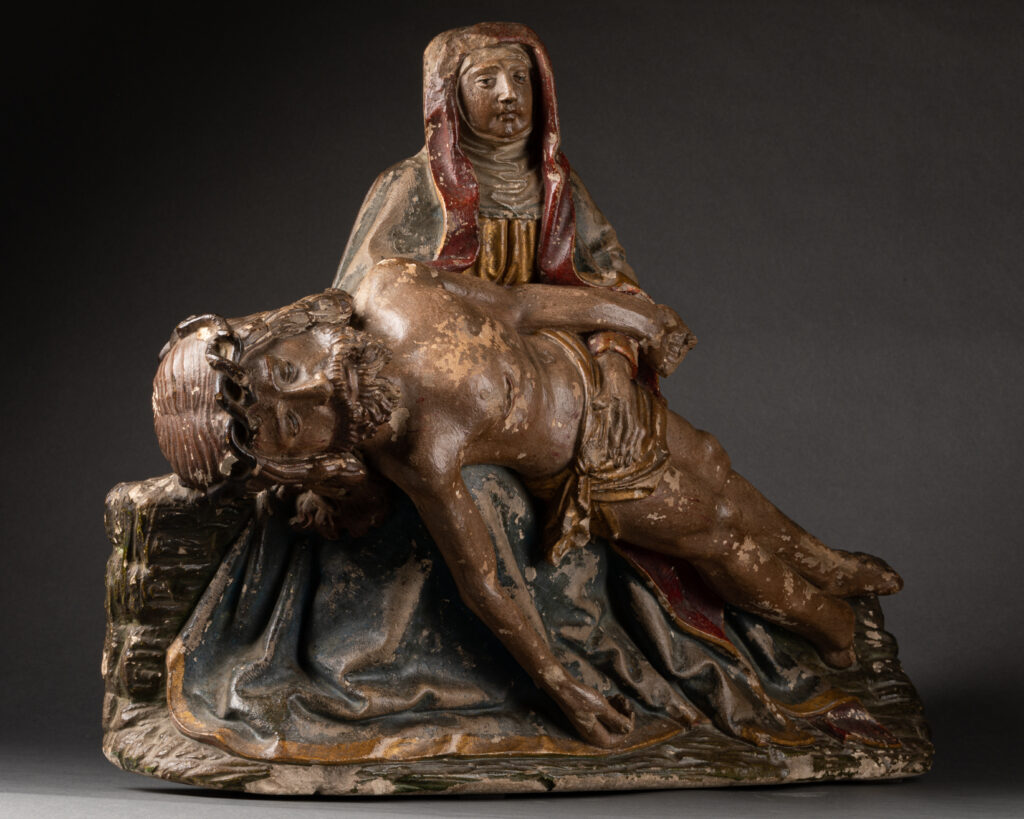This limestone sculpture represents a Virgin of Pity: after the descent from the cross, Mary holds Jesus on her lap and notes the death of her child This very moving moment is not found in the Bible but is a representation of apocryphal writings. These sensitive themes spread in Europe with the monks and the movement of the Devotio moderna: a current of thought that appears in the Germanic area at the end of the fourteenth century before spreading in Europe. The primary desire of this movement is to reform the base of the Church, so that the faithful can reappropriate their relationship to Christ and to God by eliminating the intermediaries. Through various texts and works, we insist on the humanity of Christ and the holy figures to make them models of life and piety but accessible models. Thus faith becomes more active and Man becomes a source of his own salvation: earthly experiences are opportunities to imitate Christ during his own life on Earth, to act like him and thus merit salvation.
It was also during this period that devotion to the Virgin developed, notably through the theme of the Virgin of Pity, which met with great success throughout the 15th and 16th centuries in Northern Europe and Italy. It is the pain of the Virgin, the pain of a mother that is presented to the faithful through works of various sizes.
Addressing the spectators, Mary invites them to reflect and meditate: “I am addressing you, all of you who pass by here! Look and see if there is a pain like mine, like the one I was struck with! The LORD has afflicted me in the day of his fierce anger.” (Lamentations 1:12). Depending on the literary sources, the periods, the geographical areas and the demands of the commissioners, the Virgins can vary in their attitude: some lament, cry, pray, bend over the body of Christ or express a certain acceptance. Our Lady is distinguished by her great dignity and serene expression in the face of her son’s death: she accepts Jesus’ sacrifice to save humanity.
Our Virgin of Mercy is from Champagne. We can see this in the elongation of Christ’s limbs; in the youthful appearance of Mary, her young woman’s face despite her mature age; and in the idealization of the characters’ features (ovoid faces, almond-shaped eyes, fine features, small nose, rounded forehead for the women), which are characteristic elements of the sculpture of this region.
The treatment of textiles is also a recognizable element of Champagne sculpture. Indeed, after the Time of Misfortune that runs through the 15th century, Champagne finds a favorable political, social and economic situation. From this rich period which begins, the bourgeois merchants draw their pin from the game: the businesses prosper in the cities, in particular the textile environment which develops strongly. Wanting to give themselves areas of nobility, these bourgeois buy lands, titles, marry noble women and place orders for religious art as true patrons. It is therefore normal that the characters of the works they commission are richly dressed; and that the clothes are worked. On our work, besides Jesus wearing his traditional perizonium with a remarkable work done on the folds of the fabric; Mary wears a golden dress, a guimpe veil with chin strap, and is draped with a long blue mantle with golden border and red lining. The flap of this long coat is brought back on the front and covers the legs. Note the suppleness of the drapery and the rendering of the folds of the heavy fabric, which reflects the interest of the Champenois (and their patrons) in clothing and the textile industry.
Another characteristic element of this sculpture is the material used. It is a chalky limestone, typical of southern Champagne, which by its ease of extraction has allowed the development of sculpture production in the late Middle Ages. Of a certain fragility, it is a stone whose tenderness allows a full exploitation of the imagination and talent of sculptors. It was thus very appreciated by the craftsmen because it was easy to find and to work. We can also see on the back of the piece, the original iron hanging system. In addition to the excellent condition of our piece, its original polychromy is still clearly visible, which accentuates the emotional and solemn aspect of this set.



